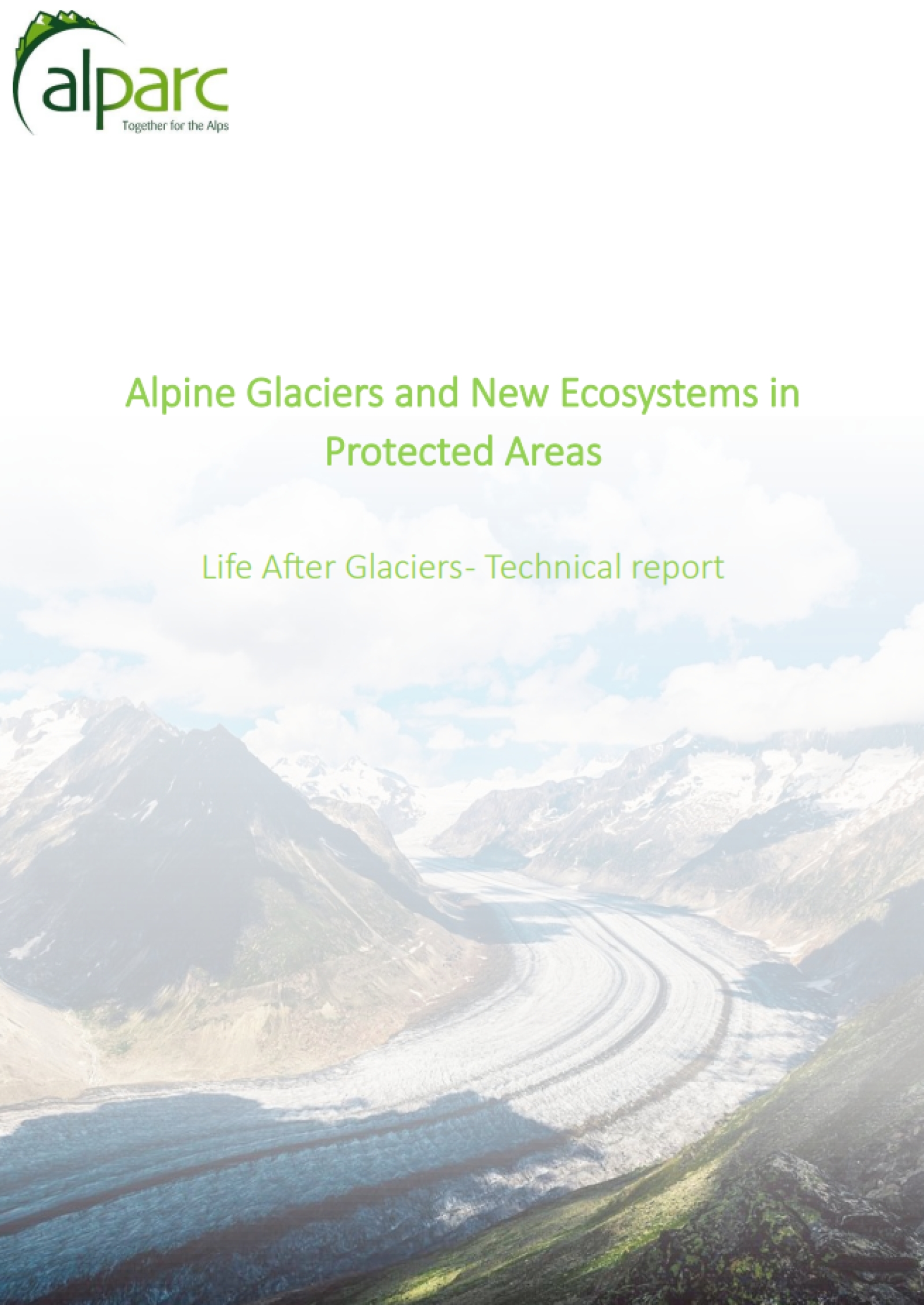ALPARC has published a new report titled “Alpine Glaciers and New Ecosystems in Alpine Protected Areas”, which is now available to read or download here:
https://alparc.org/alpine-resources/alpine-glaciers-and-new-ecosystems-in-protected-reas
The report explores the ecological impacts of glacier retreat across Alpine protected areas, with a focus on landscape transformation, species colonization, and adaptive processes. Its aim is to identify key interactions within post-glacial ecosystems and to propose both conservation and communication strategies to support the emergence of new forms of biodiversity.
Key achievements of the report include:
- Mapping observed glacier retreat and its impact on biodiversity within Alpine protected areas
- Documenting environmental changes and biological responses linked to glacier retreat
- Exploring how the phenomenon can support communication and awareness-raising efforts in protected areas
The report was developed with the collaboration of 15 stakeholders, including 14 Alpine protected areas, who contributed through survey responses, data sharing, email exchanges, and participation in a dedicated workshop.
The project behind the report
This report is part of the Life After Glacier project, developed as a contribution to the International Year 2025 for the Conservation of Glaciers. The project carried out a first assessment of glacier retreat and its ecological consequences in Alpine protected areas, with a view to identifying appropriate management and conservation responses. Special attention was given to emerging ecosystems and the evolution of life in post-glacial environments—areas of high ecological and symbolic value for Alpine heritage. The project was co-funded by the French national fund for regional planning and development (CIMA / FNADT 2024).
To learn more about the project, visit https://alparc.org/life-after-glaciers-2


